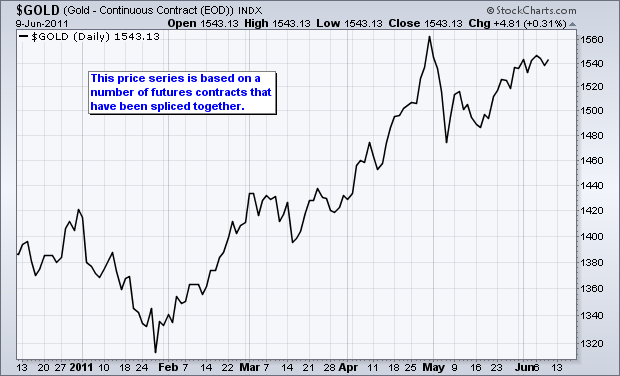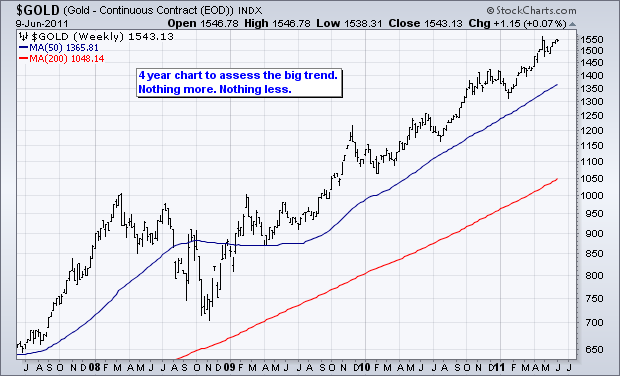|
|
A continuous futures contract is not really a futures contract. Instead, it is several futures contracts that have been spliced together to create a long-term chart. There is often a data adjustment involved in this splicing to eliminate gaps and create a smooth price series. These gaps stem from the time premium between futures contracts. The June gold futures contract on the CME will expire on June 28th. At this time, the July contract will become the nearest month and the July contract will expire on July 27th, one month later. The next month will always have one more month time premium. Because time is money, there will be a price difference to take this time premium into account. This means there will be a price gap between the expiring futures contract and the next futures contract. A continuous futures contract adjusts for these gaps and time differences to create an artificial price series.

Click this image to see a live chart.
Not all futures have consecutive monthly contracts. Some, such as 30-Year Treasury Bond futures, skip months with only four contracts per year (March, June, September, December). The bigger the time gap, the bigger the time premium.

Click this image for a live chart.
So what are continuous futures prices good for anywhere? Even traders want to get an idea of the long-term trend. Monthly or quarterly Futures contracts have limited lives, which makes it impossible to gauge the long-term trend. Continuous futures contracts provide a good means to assess the long-term trend. Traders can apply moving averages and do basic trend analysis. In fact, these charts work best with at least one year of data.


